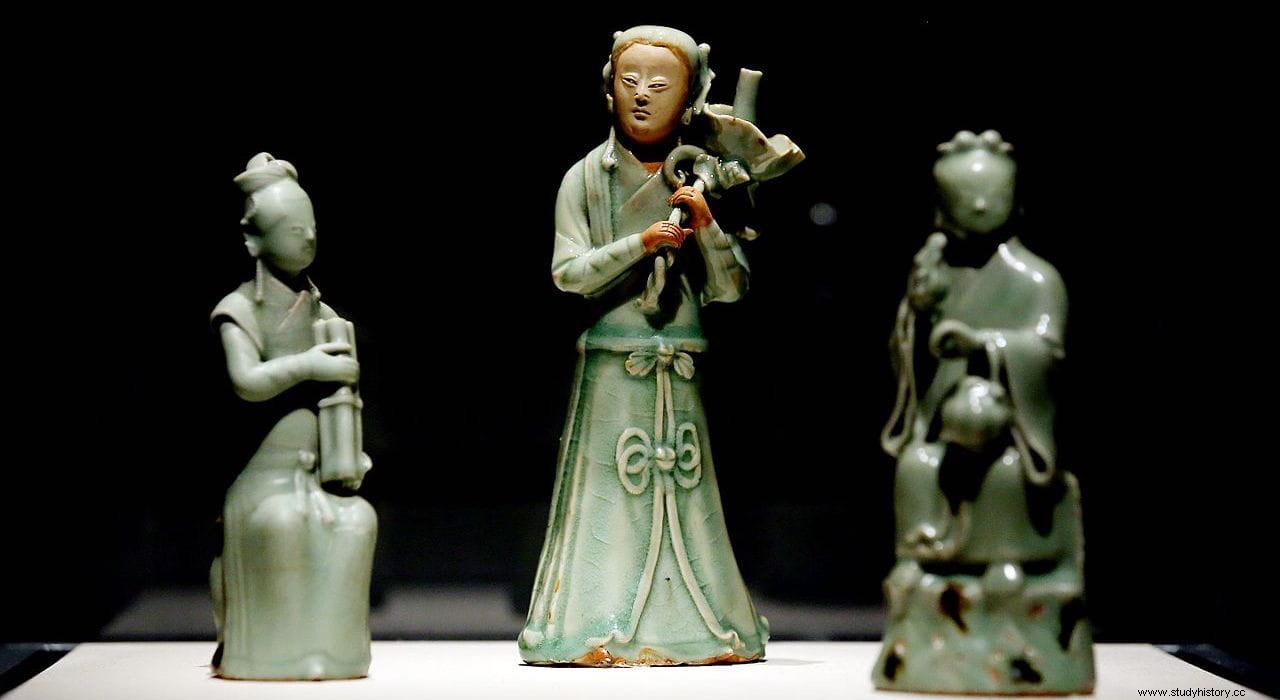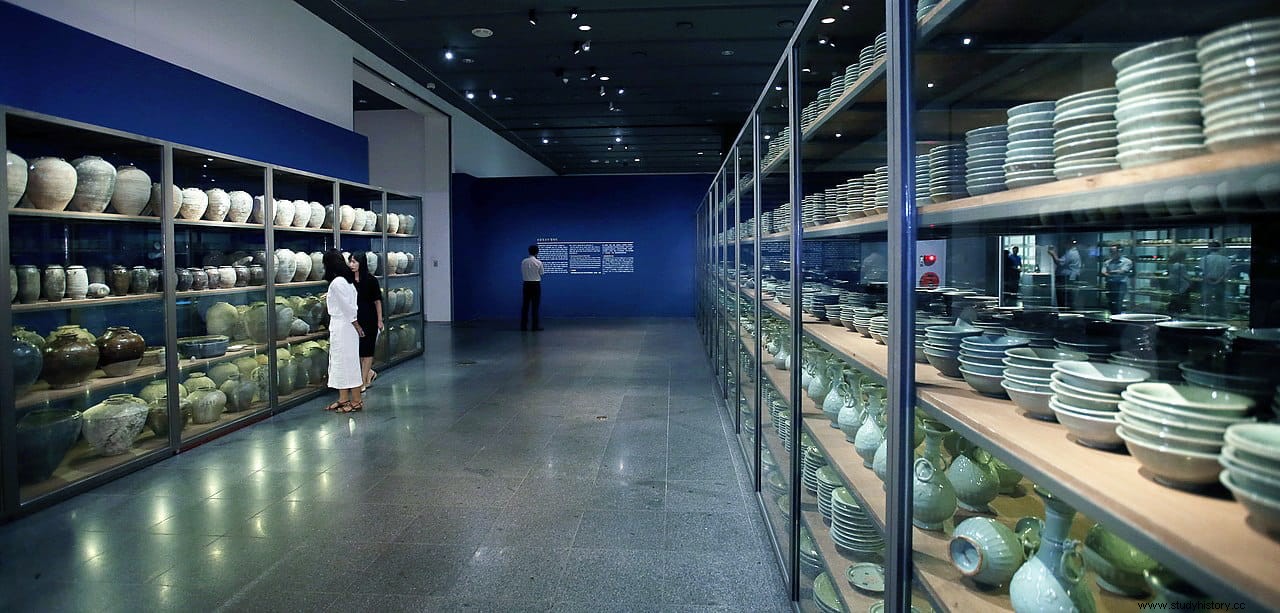In 1975, a fishing boat working in the sea off the southwestern Korean peninsula, near the Shinan Islands, caught six pieces of Chinese pottery in its nets. This seemingly trivial incident led to the discovery of a 14th-century shipwreck with a valuable cargo of pottery and other artifacts.
Much of the ship's cargo was found intact, leading researchers to describe the Shinan wreck as possibly the richest ancient shipwreck yet discovered .

For nine years, every summer from 1976 to 1984, Korean divers salvaged the remains of this medieval Chinese ship. Although the ship was only 20 meters deep, the rescue was made difficult by the currents and the lack of visibility, so the extraction work could only be carried out when the sea was calm and for no more than an hour. a day.
Working in near total darkness, the divers recovered a vast treasure trove of artifacts that included more than twenty thousand pieces of pottery, seven hundred metal objects, a couple dozen stone objects, and twenty-eight tons of Chinese coins. One thousand pieces of red sandalwood and a number of the crew's personal items were also recovered.

After salvaging the cargo, the ship was disassembled and the hull was cut underwater so that it could be lifted. The ship is presumed to be about 32 meters long and has a cargo capacity of about 200 tons. Despite being such an important find, the identity of the ship is uncertain, as is the port of departure for it. It is very likely that the ship left China for a port in Japan.
Inked wooden tags found on the wreck list the names of Japanese temples such as Tofukuji in Kyoto and Hakosaki Kyu in Hakata, as well as the names of merchants and maritime officials such as koushi , which is a term used to refer to merchant chiefs in Hakata, indicating that the ship was most likely destined for this port of entry to Japan.

A model of the ship and most of the artifacts recovered from it are on display today at the National Maritime Cultural Heritage Research Institute in Mokpo, South Korea.
This article was published in Amusing Planet. Translated from English and republished with permission.
